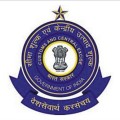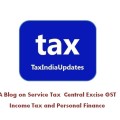February 09, 2016
F.No.276/114/2015-CX.8A
Ministry of Finance
Department of Revenue
Central Board of Excise & Customs
(Legal Cell)
INSTRUCTION
Sub:- Effect of ‘in limine’ dismissal of Special Leave Petition (SLP) by the Supreme Court and Filing of Review Petition in Supreme Court- regarding;
Board has been receiving various references from the field formations in respect of the effect of ‘in limine’ dismissal of Special Leave Petition (SLP) i.e. without its grant or without admission or any discussion by the Supreme Court. There is doubt relating to whether on dismissal of SLP ‘in limine’ the question of law posed before the Supreme Court remains open or the doctrine of merger is applicable. There are also doubts relating to filing of Review Petition before the Supreme Court. The issues have been examined by the Board.
2.The Apex Court in Kunhayammed v. State of Kerala 2001 (129) E.L.T. 11 (S.C.) has dwelt extensively upon the aspect as to when a decision of the Court in a SLP would be binding and when not. The Supreme Court observed that there are two distinct stages: (a) Granting of special leave to appeal; and (b) Hearing the appeal. If the SLP is dismissed at the stage of special leave without a speaking or reasoned order, there is no res judicata, no merger of the lower order and the petitioner retains the statutory right, if available of seeking relief in review jurisdiction of the High Court. If the SLP is dismissed at the first stage by speaking a reasoned order, there is still no merger but rule of judicial discipline and declaration of law under Article 141 of the Constitution will apply. The order of Supreme Court would mean that it has declared the law and in that light the case was considered not fit for grant of leave. Once leave is granted but SLP converted into appeal is dismissed with or without reasons, merger results and law is declared. It is no longer permissible to move the High Court by review and no Court, Tribunal or Authority can express any opinion contrary to the view taken by Supreme Court. Order appealed against can be reversed, modified or affirmed by the Supreme Court in exercise of appellate jurisdiction at the second stage only and not at the discretionary first stage of special leave under Article 136 of the Constitution of India.
3.Article 137 of the Constitution of India, which reads as under, provides for review of judgments or orders by the Supreme Court:
“Subject to the provisions of any law made by Parliament or any rules made under Article 145, the Supreme Court shall have power to review any judgment pronounced or order made by it.”
4.Part VIII, Order XL of the Supreme Court Rules, 1966 states that the Supreme Court may review its judgment in a civil proceeding on the ground mentioned in Order XLVII, Rule I of the Civil Procedure Code i.e. the discovery of new and important matter or evidence which, after the exercise of due diligence was not within the knowledge or could not be produced at the time when the decree was passed or order made, or on account of some mistake or error apparent on the face of the record or for any other sufficient reason. In a criminal proceeding review petition can only be filed when there is an error apparent on the face of the record. The application for review shall be filed within thirty days from the date of the judgment or order sought to be reviewed. The application shall set out clearly the grounds of review.
5.The Supreme Court in Kamlesh Verma vs. Mayawati & Ors. (Review Petition No. 453/2012 in Writ Petition (CRL.) 135/2008) vide order dated 08.08.2013 has laid down the following principles: “(A) when the Review will be maintainable:
(i) Discovery of new and important matter or evidence which, after the exercise of due diligence, was not within knowledge of the petitioner or could not be produced by him;
(ii) Mistake or error apparent on the face of the record;
(iii) Any other sufficient reason.
The words “any other sufficient reason” has been interpreted in Chajju Ram vs. Neki, AIR 1922 PC 112 and approved by the Supreme Court in Moran Mar Basselios Catholicos vs. Most Rev. Mar Poulose Athanasius & Ors. (1955) 1 SCR 520, to mean “a reason sufficient on grounds at least analogous to those specified in the rule.”
The same principles have been reiterated in UOI vs. Sandur Manganese & Iron Ores Ltd. & Ors., JT 2013 (8) SC 275.
“(B) When the review will not be maintainable:
(i) A repetition of old and overruled argument is not enough to re-open concluded adjudications;
(ii) Minor mistakes of inconsequential import;
(iii) Review proceedings cannot be equated with the original hearing of the case;
(iv) Review is not maintainable unless the material error, manifest on the face of the order, undermines its soundness or results in miscarriage of justice;
(v) A review is by no means an appeal in disguise whereby an erroneous decision is reheard and corrected but lies only for patent error.
(vi) The mere possibility of two views on the subject cannot be a ground for review.
(vii) The error apparent on the face of the record should not be an error which has to be fished out and searched.
(viii) The appreciation of evidence on record is fully within the domain of the appellate court, it cannot be permitted to be advanced in the review petition.
(ix) Review is not maintainable when the same relief sought at the time of arguing the main matter has been negatived.”
6.The field formations are, therefore, requested to keep in mind the above, while interpreting the Supreme Court’s dismissal of SLP ‘in limine’. If the SLP has been dismissed ‘in limine’ there cannot be any ground for filing a review petition. It is requested that above instructions may be brought to the knowledge of all formations within your jurisdiction.
(Harsh Vardhan)
Senior Analyst
Source Document: http://www.cbec.gov.in/htdocs-cbec/excise/cx-instructions/cx-instructions-2016/cx-ins-in-limine-dismisal-slp.pdf




